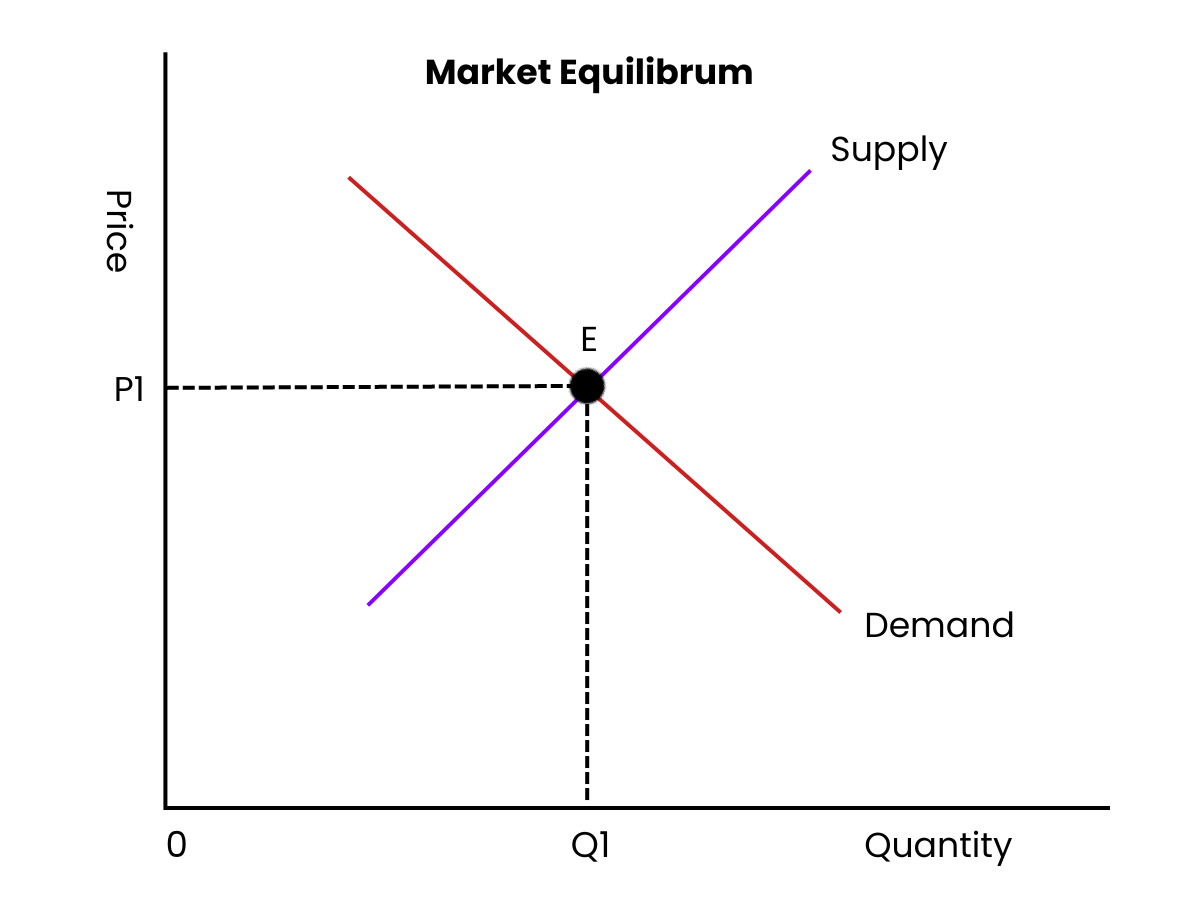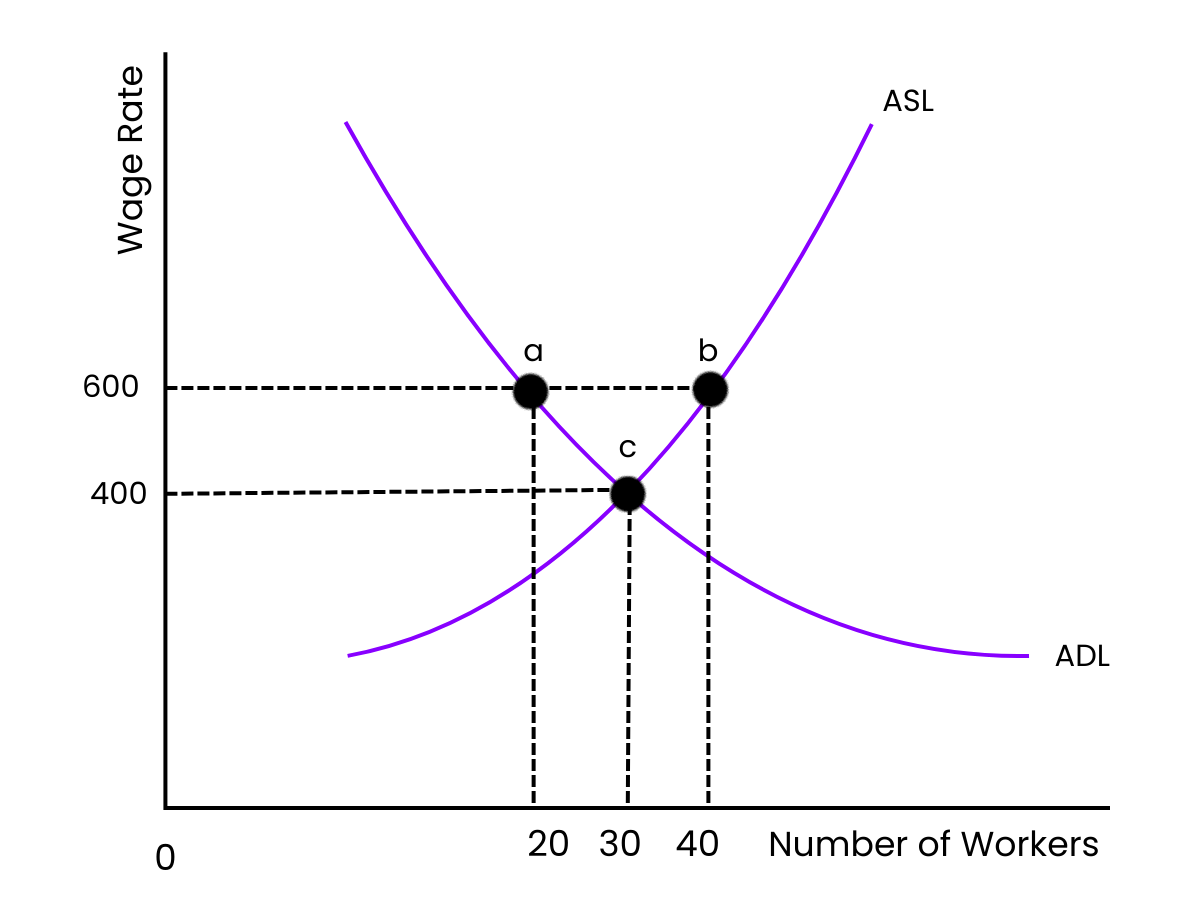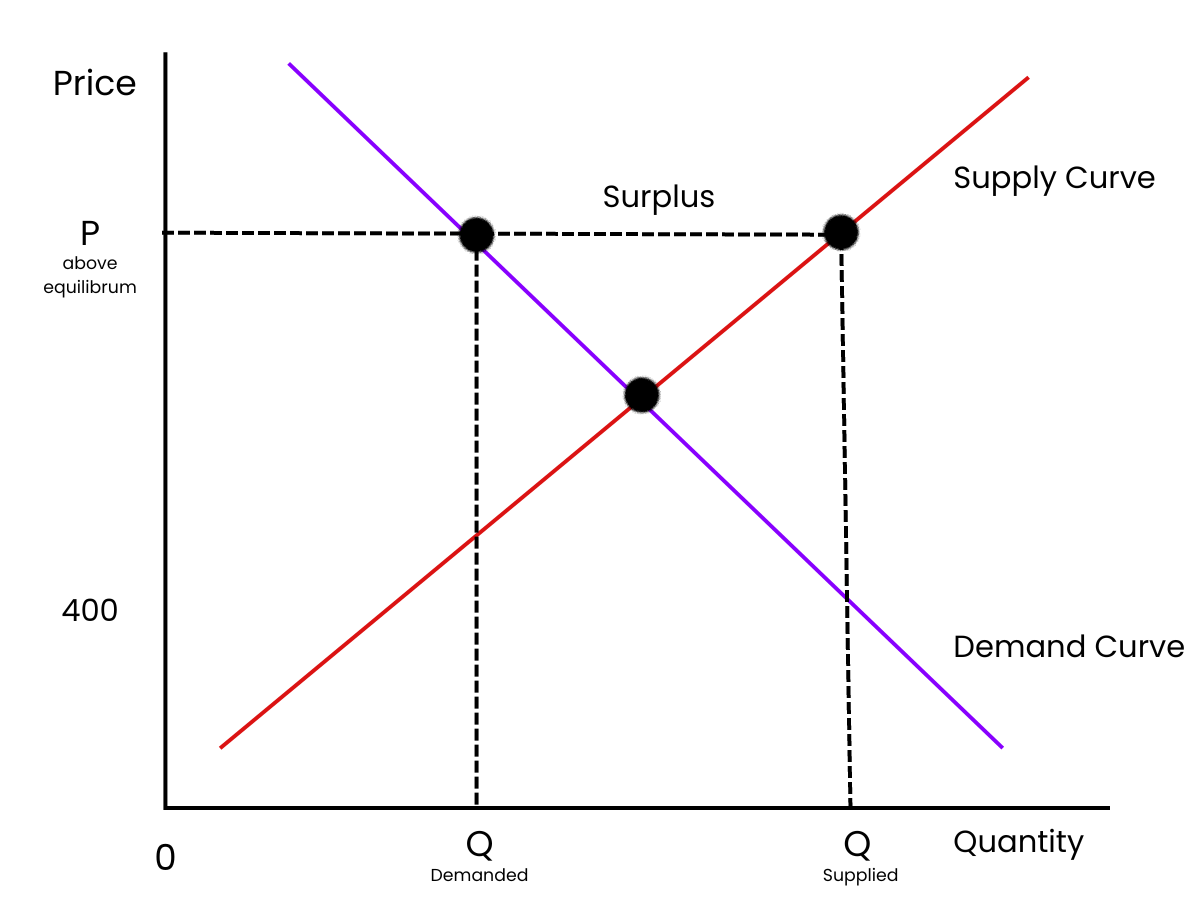Market equilibrium is a crucial concept in AP Macroeconomics, representing the point where supply equals demand. Understanding disequilibrium—surpluses and shortages—and the factors causing shifts in equilibrium helps students analyze market dynamics. This knowledge enables effective evaluation of real-world economic situations, including the impact of government policies on market stability and efficiency.
Learning Objectives
Understand the concepts of market equilibrium, surplus, and shortage. Analyze the effects of shifts in demand and supply on equilibrium price and quantity. Evaluate the implications of government interventions such as price controls. Apply these concepts to real-world scenarios to enhance economic reasoning and decision-making.
Market Equilibrium

- Definition: Market equilibrium occurs when the quantity of a good or service demanded by consumers equals the quantity supplied by producers. This balance creates a stable market price.
- Equilibrium Price and Quantity: The point where the supply and demand curves intersect represents the equilibrium price (P) and equilibrium quantity (Q).
- Graphical Representation:
- Demand Curve: Downward sloping, indicating that as price decreases, quantity demanded increases.
- Supply Curve: Upward sloping, showing that as price increases, quantity supplied increases.
- The intersection point determines the equilibrium.
Disequilibrium

- Definition: Disequilibrium occurs when there is an imbalance between quantity demanded and quantity supplied, leading to excess supply (surplus) or excess demand (shortage).
- Surplus:
- Occurs when the price is above the equilibrium price (P > P*).
- Producers supply more than consumers are willing to buy, leading to unsold inventory.
- In response, prices typically decrease to reach equilibrium.
- Shortage:
- Occurs when the price is below the equilibrium price (P < P*).
- Consumers demand more than producers supply, leading to unmet demand.
- Prices usually rise as consumers compete for limited goods, moving toward equilibrium.
Changes in Equilibrium

- Shifts in Demand:
- An increase in demand (rightward shift of the demand curve) can be caused by factors such as increased consumer income, changes in consumer preferences, or population growth.
- Result: Higher equilibrium price and quantity.
- A decrease in demand (leftward shift) can result from factors like a decline in consumer income or changes in preferences.
- Result: Lower equilibrium price and quantity.
- Shifts in Supply:
- An increase in supply (rightward shift of the supply curve) can occur due to technological advancements, decreases in production costs, or favorable weather conditions in agriculture.
- Result: Lower equilibrium price and higher quantity.
- A decrease in supply (leftward shift) can be caused by increased production costs, natural disasters, or stricter regulations.
- Result: Higher equilibrium price and lower quantity.
- Simultaneous Shifts:
- When both supply and demand curves shift, the effects on equilibrium price and quantity can be ambiguous.
- If demand increases and supply decreases, equilibrium quantity will definitely rise, but the effect on price is uncertain.
- If demand decreases and supply increases, equilibrium quantity will definitely fall, but price effects are uncertain.
Key Concepts
- Price Controls: Government-imposed price ceilings (maximum prices) or floors (minimum prices) can lead to persistent disequilibrium. Price ceilings create shortages, while price floors create surpluses.
- Market Efficiency: At equilibrium, resources are allocated efficiently, maximizing consumer and producer surplus.
- Dynamic Nature of Markets: Markets constantly adjust to changes in conditions, meaning equilibrium is not static but rather a moving target based on external factors.
Examples
Example 1: Agricultural Products
In a good harvest, the supply of crops increases, leading to lower prices and higher equilibrium quantities as farmers sell more to meet consumer demand.
Example 2: Housing Market
An increase in population raises demand for housing. This results in higher prices and equilibrium quantity as builders respond to meet the increased need.
Example 3: Minimum Wage Laws
Setting a minimum wage above equilibrium can create a surplus of labor, where more workers seek jobs than employers are willing to hire, leading to unemployment.
Example 4: Technological Advances
A new technology reduces production costs, shifting the supply curve right. This leads to lower prices and increased equilibrium quantity, benefiting consumers with cheaper goods.
Example 5: Seasonal Changes
During the holiday season, demand for certain products surges. This shift increases prices and equilibrium quantities, prompting retailers to stock more items to meet consumer needs.
MCQs
Question 1
What occurs when the price of a good is set above the equilibrium price?
A) Shortage
B) Surplus
C) Equilibrium
D) Market Failure
Answer: B) Surplus
Explanation: When the price is above the equilibrium price, quantity supplied exceeds quantity demanded, resulting in a surplus of goods in the market.
Question 2
If the demand for a product increases while the supply remains constant, what will happen to the equilibrium price and quantity?
A) Price decreases, quantity increases
B) Price increases, quantity decreases
C) Price increases, quantity increases
D) Price remains the same, quantity increases
Answer: C) Price increases, quantity increases
Explanation: An increase in demand with constant supply leads to a higher equilibrium price and quantity as consumers are willing to pay more for the increased demand.
Question 3
Which of the following is an example of a price floor?
A) Rent control laws
B) Minimum wage laws
C) Sales tax
D) Import tariffs
Answer: B) Minimum wage laws
Explanation: Minimum wage laws set a legal lowest price for labor, creating a price floor that can lead to a surplus of labor if set above the equilibrium wage.


